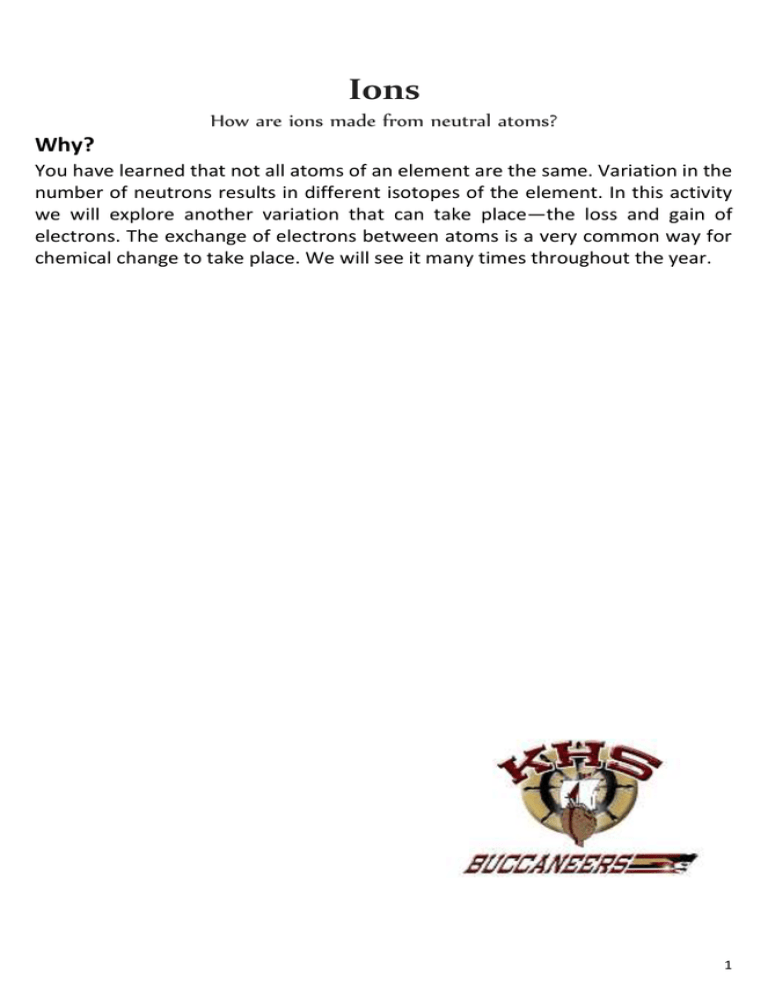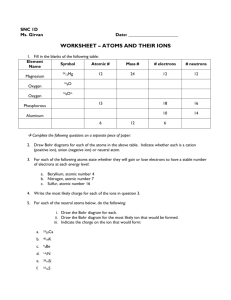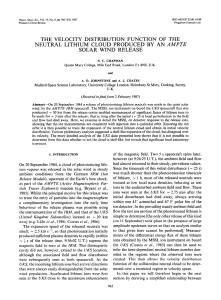Ions
advertisement

Ions How are ions made from neutral atoms? Why? You have learned that not all atoms of an element are the same. Variation in the number of neutrons results in different isotopes of the element. In this activity we will explore another variation that can take place—the loss and gain of electrons. The exchange of electrons between atoms is a very common way for chemical change to take place. We will see it many times throughout the year. 1 2 3 1. Use Model 1 to complete the following table. 2. Based on the table you completed in Question 1, what distinguishes a neutral atom from an ion? 3. Examine the isotope symbols in Model 1. a. Where is the ion charge located in the isotope symbol? b. Is a charge indicated on the neutral atoms? If yes, where is it located? 4. Which subatomic particle carries a positive charge? 5. Which subatomic particle carries a negative charge? 6. Propose a mathematical equation to calculate the charge on an ion from the number of protons and electrons in an ion. Confirm your equation works using two positive ion examples and two negative ion examples from Model 1. 4 Read This! Chemists refer to positively charged ions as cations and negatively charged ions as anions. 7. Fill in the following table. 8. Could adding three protons to an aluminum atom make a +3 ion of aluminum? Explain. 9. One of your classmates is having trouble understanding ions. He explains the formation of a cation like this: “When you add an electron, you get a positive charge because adding is positive in math.” a. As a group, explain in a grammatically correct sentence why this student is incorrect. b. Provide a better description of how math relates to electrons and ion formation. 5 10. Draw a stair-step line in Model 2 to separate the metals and nonmetals. 11. Consider the ions listed in Model 2. a. In general, do nonmetals form anions or cations? b. In general, do metals form anions or cations? c. Which nonmetal appears to be an exception to these guidelines? 12. For the main group elements (excluding the transition elements), is it necessary to memorize the type of ion each element makes or could you predict the ion charge using a periodic table? Explain. 13. In Model 2 there are several elements whose atoms make more than one type of ion. Where in the periodic table are these elements usually found? 6




